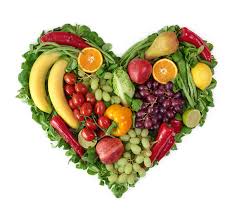 1. Buy in Bulk
1. Buy in Bulk
Why pay for fancy packaging? I bring everything home and pour them into my own containers. I painted a stripe of chalkboard paint onto each container so I can easily label each container.
2. Make Double & Triple Batches
Freeze leftovers, label with the date and use within a month. Or trade with a friend or two.
3. Plant a Garden
Work with a friend or group to plant different items and meet to trade or deliver to each other.
4. Raise Livestock
Okay I know this isn’t an option for everyone but for those of you who live in an area where this is a viable idea you may want to get started small. A few chickens, a couple of goats and you’re on your way. If that still sounds intimidating enlist the help of a friend or join a local group and meet to trade goods and tips. One person may raise chickens, another may have goats, etc.
5. Join a Co-op
Co-ops are an excellent way to get food that is already lower cost at an even steeper discount. For a few hours a week of work you get all your groceries at a great discount.
6. Take Advantage of Sales
It’s more difficult to find coupons for healthier foods but sales are very common. Many grocery stores even have a healthy food section where you can find items on sale. When you find something that you know you like buy lots. When you see something that you’ve been wanting to try, buy one. If you like it, then next time it’s on sale you can buy tons.
7. Make Your Own Basics
There are so many items you can make for pennies and that don’t take a lot of time, especially if you make large batches or work with several friends to trade items. Think bread, granola, desserts, pizza, pancakes and waffles, pasta sauce, salad dressing, roasted chicken or turkey …
8. Don’t Waste Food
Many recipes cavalierly tell you to toss out the portion you’re not using for the recipe, but I like to:
- zest citrus fruits before juicing them
- save vegetable trimmings to make vegetable broth
- save herb trimmings to make pesto or add to broth
- use egg yolks to make mayonaise or custard
- use egg whites to make mousse or an egg white omelette
- use bread crusts to make bread pudding or croutons
I’ll also use fruit that is nearing it’s prime to make broth smoothies or cut it into chunks and freeze it for making smoothies at a later time.
When the kids ask me to cut the crusts off their peanut butter and jelly sandwiches I save them in a ziplock bag in the freezer. When the bag is full they make a fantastic bread pudding.
Add some raisins to leftover rice to make a rice pudding for tomorrow night’s desert.
Crumbs left in the bottom of the bag can be used to top a casserole or for some crunch in your salad.
Broken bits of corn or whole wheat tortillas can be baked for chips.
9. Use Less Expensive Ingredients
Canned fish is much less expensive than fresh or frozen fish.
A whole chicken or turkey is less expensive than packaged pieces.
In season produce is less expensive than produce that has to be trucked in from another area.
Store brands are less expensive than gourmet brands.
10. Eat Less Meat
Meat is easily the most expensive item in any meal. You don’t have to go totally vegetarian, you don’t even have to have a vegetarian meal to eat less meat. You can check out my Meat-less Meals (I’ll update this post with a link when I publish those recipes) for recipes and ideas on meals with less meat, but the basic idea is to:
- Serve a vegetarian meal two to three days a week
- Serve less meat the other days of the week
I hope this list of ways to save money without compromising your desire to eat healthy will serve to keep healthy foods on your table and more cash in your pocket. Eat well and be healthy!
Have you ever found yourself standing in front of the fridge so hungry that you can’t even think. No? Well I have plenty of times. For those of you who are often in the same quandry I’ve put together a selection of easy (no measurements and infinitely customizable to use what you already have) make-ahead salads that will be ready to go when you are. Plus they’re perfect to pack up and take along to work, on a hike, to a picnic …


